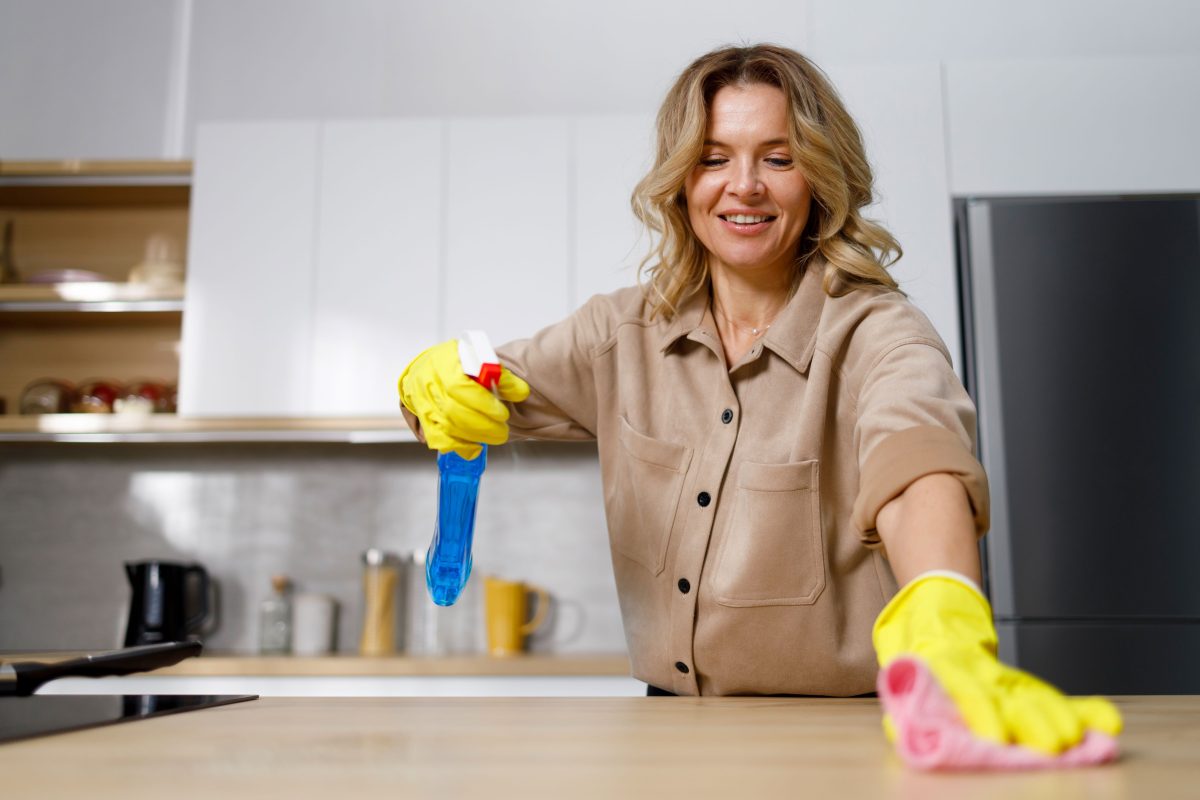The Ultimate Guide to Everyday Cleaning: Just How to Scrub the Surfaces, Vacuum Carpets, and Clear Out Any Clutter
The Ultimate Guide to Everyday Cleaning: Just How to Scrub the Surfaces, Vacuum Carpets, and Clear Out Any Clutter
Blog Article
Understanding the Requirement for Thoroughly Sanitizing and Disinfecting Often Touched Surface Areas in High-Traffic Areas
In the realm of public health and wellness and safety, the precise sanitation and sanitization of frequently touched surface areas in high-traffic locations stand as critical procedures in avoiding the spread of dangerous pathogens. The importance of this technique extends far past plain cleanliness, delving into the world of condition prevention and community wellness. By exploring the different aspects of surface area sanitation, from the risks connected with disregarding cleaning protocols to the efficient techniques that can be employed, a more clear understanding emerges of the essential role these techniques play in securing public health. As we navigate this discussion, it ends up being noticeable that the implications of comprehensive surface disinfection resound not just within the boundaries of a certain setting yet additionally reverberate on a more comprehensive range, affecting the wellness and safety and security of people throughout diverse common settings.
Relevance of Surface Disinfection
Stressing the complete disinfection of high-traffic surface areas is vital in preserving a sanitary atmosphere and stopping the spread of damaging pathogens. High-touch surface areas such as door deals with, light buttons, elevator switches, and counter tops work as breeding premises for infections and germs. Normal disinfection of these surface areas is crucial to decrease the threat of contamination and transmission of diseases.
By applying a robust sanitation method, organizations and businesses can create a more secure environment for clients, site visitors, and staff members. Correct surface area disinfection not only alleviates the spread of transmittable diseases however likewise infuses self-confidence in the cleanliness and security of the facilities. This aggressive strategy demonstrates a commitment to health and wellness, which is especially vital in high-traffic locations where the likelihood of exposure to pathogens is increased.
Additionally, surface area sanitation plays a crucial role in general infection control techniques. Integrated with hand hygiene methods, using masks, and preserving physical distancing, complete sanitation of high-touch surfaces forms an extensive defense against the transmission of hazardous microorganisms. Prioritizing surface sanitation is an essential part of an all natural strategy to health and wellness in common areas.
Dangers of Overlooking Cleaning Practices
Neglecting thorough sanitation of high-traffic surface areas substantially increases the risk of viral and microbial contamination, posturing a severe danger to the health and wellness of individuals frequenting these rooms. Failure to execute proper cleaning techniques can bring about the buildup and spread of harmful virus, consisting of germs and viruses, on often touched surfaces such as doorknobs, hand rails, lift switches, and kitchen counters.

Moreover, ignoring the importance of detailed cleaning not just jeopardizes the well-being of individuals however additionally undermines efforts to keep a sanitary and clean atmosphere. It is critical to recognize the importance of proper sanitation protocols in preventing the spread of infections and securing public health.
Reliable Disinfection Techniques
To keep optimum cleanliness and decrease the danger of contamination on high-traffic surface areas, utilizing reliable sanitation approaches is essential. One of the most effective and typical sanitation methods is making use of chemical anti-bacterials.
Another effective method is the use of UV-C light. UV-C light has been shown to be effective in killing a wide array of bacteria by interrupting their DNA framework, thus stopping them from duplicating. It is necessary to utilize UV-C light appropriately, guaranteeing that the appropriate intensity and direct exposure time are used to accomplish the preferred disinfection outcomes.
Furthermore, using heavy steam cleaning as a sanitation method can be very efficient, especially on surface areas that are heat-resistant. Steam can pass through porous surface areas and kill germs, viruses, and various other pathogens successfully. When using heavy steam cleaning, it is very important to ensure that the surface area reaches the called for temperature for an adequate quantity of time to ensure correct disinfection.
Influence On Public Health
The upkeep of high standards of tidiness and sanitation on high-traffic surfaces plays a vital role in protecting public wellness. Frequently touched surfaces in locations with high tramp, such as doorknobs, handrails, lift buttons, and restroom facilities, function as reproducing grounds for damaging virus. Failing to effectively disinfect these surfaces can bring about the rapid spread of contagious conditions within communities. By executing complete sanitation protocols, the risk of transmission of viruses, germs, and various other bacteria can be have a peek here significantly decreased.
Efficient cleanliness methods not only secure individuals from falling ill but also contribute to the total health of culture. Public wellness authorities highlight the value of preserving clean environments to avoid episodes and have the spread of ailments. In high-traffic locations like flight terminals, schools, medical facilities, and public transport systems, the impact of rigorous sanitation procedures can not be downplayed. Prioritizing the sanitization of regularly touched surface areas is a proactive approach to advertising public health and wellness and boosting the safety of people in common spaces.
Implementing Normal Cleaning Protocols
Without delay instituting and adhering to a consistent schedule of cleansing methods is vital for preserving the tidiness and safety and security of high-traffic surface areas. Routine cleansing procedures are important in stopping the buildup of germs and virus on regularly touched surface areas, especially in areas with high foot traffic. By carrying out an organized technique to cleansing, companies can efficiently minimize the danger of illness transmission and create a much healthier atmosphere for workers, consumers, and the public.
To develop a reliable cleaning schedule, it is important to identify high-traffic locations that require regular focus. These locations might consist of doorknobs, handrails, lift switches, washroom centers, and shared equipment. Carrying out a regular cleansing regimen that targets these surfaces several times a day can substantially reduce the spread of dangerous germs and infections.
Furthermore, utilizing suitable cleaner and disinfectants is vital to making certain that surfaces are extensively sterilized. Regular training of cleaning up team on correct cleansing methods and the importance of adherence to the cleaning schedule is likewise vital in keeping a hygienic environment. By prioritizing regular cleansing methods, organizations can promote the health and wellness of individuals who engage with these high-traffic surfaces.

Final Thought
In verdict, it is important to focus on complete sanitation and sanitization of frequently touched surfaces in high-traffic locations to avoid the spread of harmful pathogens and preserve public health and wellness. It is crucial to acknowledge the relevance of preserving tidy surfaces in high-traffic areas to guarantee the wellness of the community.
In the world of public health and wellness and security, the precise disinfection and Clicking Here sanitization of often touched surface areas in high-traffic areas stand as vital actions in stopping the spread of unsafe pathogens. By checking out the numerous aspects of surface disinfection, from the dangers associated with disregarding cleaning protocols to the effective techniques that can be utilized, a clearer understanding emerges of the crucial role these methods play in securing public health and wellness.In addition, using heavy steam cleaning as a disinfection method can be very effective, especially on surfaces that are heat-resistant. When making use of heavy steam try this website cleansing, it is crucial to guarantee that the surface area gets to the required temperature level for an enough amount of time to guarantee correct disinfection.
In conclusion, it is important to focus on detailed disinfection and sanitization of regularly touched surfaces in high-traffic areas to stop the spread of unsafe pathogens and maintain public health.
Report this page